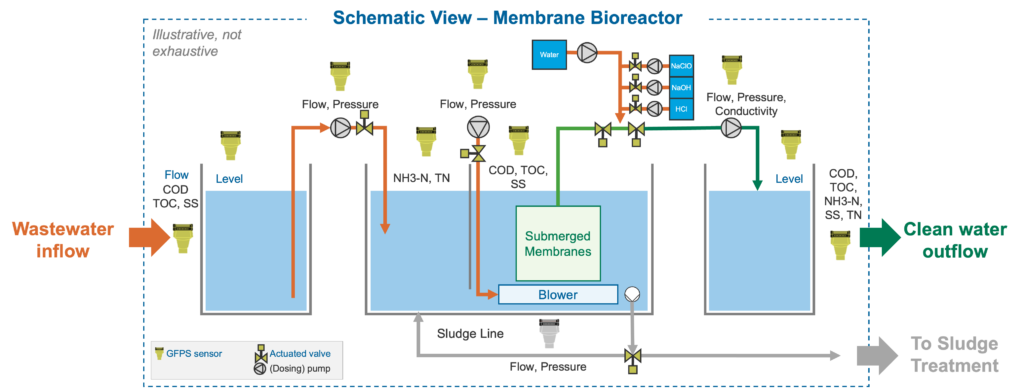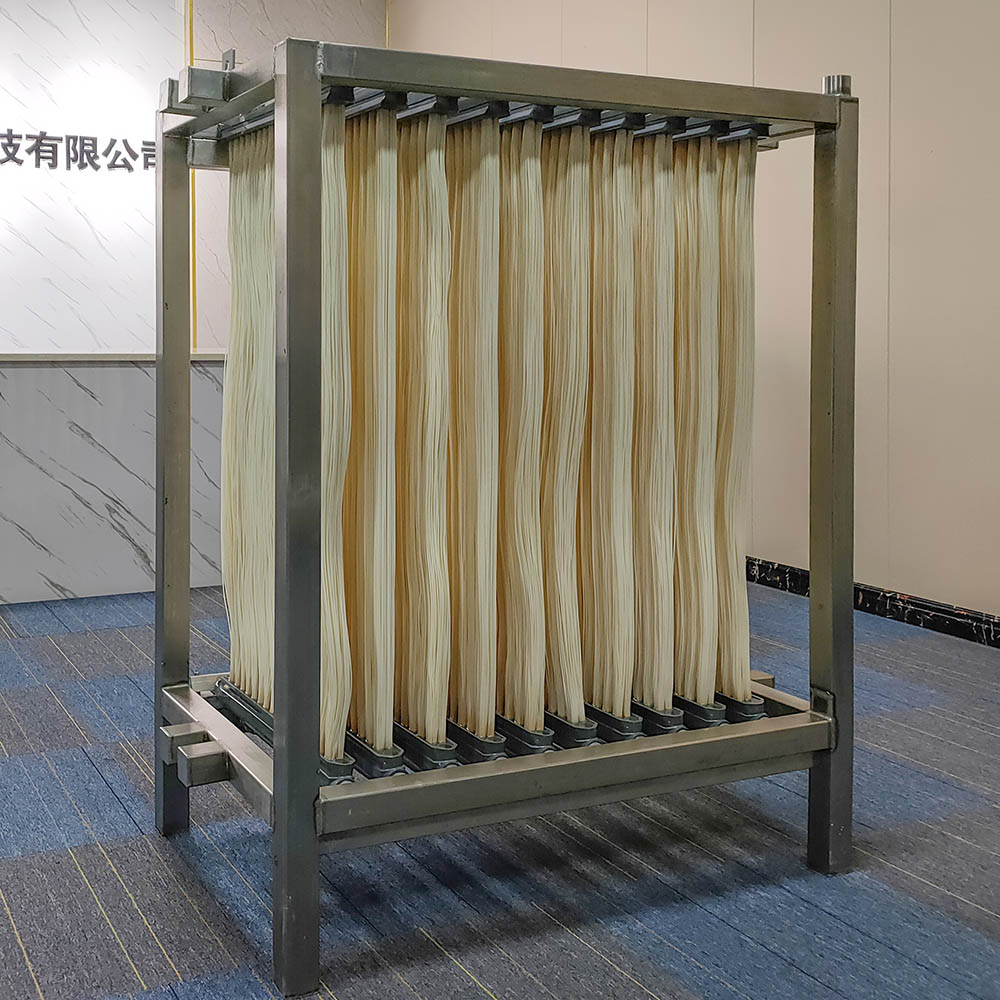Future Trends in Membrane Bioreactor Technology and Its Global Impact
Future Trends in Membrane Bioreactor Technology and Its Global Impact
Blog Article
Membrane Bioreactors Clarified: Effective Solutions for Clean Water
Membrane layer bioreactors (MBRs) have actually become an innovative option for resolving journalism obstacles of wastewater treatment. By incorporating organic processes with advanced membrane layer purification, MBRs not only enhance the high quality of treated water but additionally lower the spatial needs of treatment facilities. As environmental worries escalate, the function of MBR technology in promoting sustainable water administration becomes progressively significant. Nonetheless, the complexities of their procedure, advantages, and possible applications merit a closer examination to totally comprehend their influence on the future of water treatment.

What Are Membrane Layer Bioreactors?
Membrane bioreactors (MBRs) are sophisticated wastewater treatment systems that integrate organic degradation procedures with membrane filtration modern technology. This integration enables the effective elimination of contaminants from water, making MBRs a preferred choice in various applications, including metropolitan wastewater therapy and commercial effluent administration.

One of the vital benefits of MBRs is their capacity to generate high-quality effluent, typically appropriate for reuse in watering or industrial procedures. Furthermore, MBRs require a smaller impact compared to standard treatment systems, making them perfect for city setups where space may be limited.
Furthermore, MBRs can properly manage differing influent tons and are much less vulnerable to the results of toxic shocks. These attributes contribute to their expanding popularity as a lasting service for dealing with the boosting demand for clean water while reducing ecological effects.
Exactly How Membrane Bioreactors Job
While the procedure of membrane bioreactors (MBRs) might seem complicated, it fundamentally focuses on the harmony between biological procedures and membrane filtration. MBRs incorporate a biological treatment procedure, normally turned on sludge, with a membrane layer separation device to treat wastewater efficiently.
In an MBR system, wastewater is very first introduced right into a bioreactor where microbes break down raw material and various other pollutants. The biological task lowers the focus of toxins while promoting the growth of biomass. Following this biological treatment, the combined alcohol is subjected to membrane layer purification, which can be microfiltration or ultrafiltration, depending on the preferred effluent high quality.
The membrane layers act as a physical barrier, enabling water and small solutes to pass while maintaining suspended solids and bigger molecules. This makes it possible for the system to preserve a high focus of biomass within the reactor, enhancing the therapy performance.
Furthermore, the constant splitting up of cured water from the biomass helps with a portable layout and lessens the impact of the treatment center. Overall, the mix of biological degradation and membrane filtering in MBRs leads to reliable and reputable wastewater treatment, guaranteeing high-quality effluent ideal for different applications.
Advantages of MBR Technology
One of the vital benefits of membrane layer bioreactor (MBR) technology is its capability to produce high-grade effluent with a substantially decreased impact compared to standard wastewater treatment approaches. MBR systems efficiently integrate biological therapy and membrane layer filtering, causing premium removal of pollutants, including put on hold solids, virus, and organic matter. This capability causes effluent that often satisfies or surpasses rigorous regulative requirements for reuse and discharge.
Furthermore, MBR modern technology enables greater biomass concentrations, which boosts the treatment effectiveness and reduces the required activator quantity. This small style is specifically beneficial in urban areas where room is restricted. The operational adaptability of MBR systems also implies they can adapt to differing influent top qualities and flow prices, making them appropriate for a vast variety of applications.
Additionally, the reduced sludge production linked with MBR processes contributes to decrease functional and upkeep costs. The membrane layers function as a physical obstacle, reducing the threat of obstructing and making it possible for longer functional periods in between cleansing. Generally, the benefits of MBR modern technology make it an eye-catching option for lasting wastewater therapy, dealing with both environmental issues and the requirement for efficient resource administration.
Applications of Membrane Layer Bioreactors
With their convenience and efficiency, membrane layer bioreactors (MBRs) discover applications across numerous fields, consisting of municipal wastewater therapy, industrial procedures, and even water improvement. In municipal settings, MBRs offer a small service for dealing with wastewater, properly eliminating impurities while all at once generating high-quality effluent that meets rigorous governing criteria. This makes them especially suitable for locations with minimal room.
In industrial applications, MBR innovation is made use of for dealing with procedure water, particularly in markets such as food and drink, drugs, and petrochemicals. These industries gain from MBRs' capacity to handle high natural tons and their performance in recuperating important resources from wastewater, such as nutrients and water.
Furthermore, MBRs play an essential function in water reclamation initiatives, enabling the reuse of treated wastewater for watering, industrial procedures, or perhaps as safe and clean water after additional treatment (Membrane Bioreactor). Their effectiveness in eliminating pollutants and microorganisms makes them a trustworthy selection for guaranteeing water top quality in different reuse applications
Future of Water Treatment Solutions
The future of water treatment solutions is positioned for transformative advancements driven by technological innovation and enhancing ecological awareness. As global water shortage comes to be a pressing issue, brand-new techniques, including membrane layer bioreactor (MBR) systems, are readied my latest blog post to play a crucial role in improving the performance and sustainability of water treatment processes.
Arising innovations such as expert system and equipment learning are expected to optimize treatment operations, enabling real-time surveillance and anticipating maintenance. This will certainly boost the total reliability and performance of water treatment centers. Developments in membrane layer materials, such as graphene and nanofiltration, guarantee to raise permeation prices and minimize fouling, leading to reduced energy consumption and operational expenses.
In addition, the assimilation of renewable resource sources right into water treatment plants will contribute to greener techniques. The round economic situation model will likewise gain grip, urging the healing of beneficial sources from wastewater, such as nutrients and power.
Final Thought

Membrane layer bioreactors (MBRs) have emerged as a sophisticated solution for dealing with the pressing challenges of wastewater treatment. By integrating organic processes with advanced membrane layer purification, MBRs not weblink just enhance the high quality of cured water yet also lower the spatial requirements of therapy facilities.One of the essential benefits of membrane bioreactor (MBR) innovation is its capability to produce premium effluent with a significantly minimized impact contrasted to conventional wastewater therapy methods.With their versatility and efficiency, membrane layer bioreactors (MBRs) find applications across various industries, consisting of metropolitan wastewater therapy, commercial procedures, and also water recovery.In final thought, membrane bioreactors represent a considerable improvement in wastewater treatment innovation, integrating biological processes with reliable membrane layer purification to create top quality effluent.
Report this page